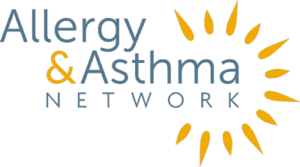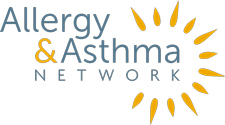You and your child are no doubt eager to scare up a memorable Halloween costume for trick-or-treating. But how can you ensure Halloween is safe for children – and grown-ups, too – with asthma and allergies? What about COVID-19?
With a few simple precautions, Halloween can be a safe event for you and your children. Happy haunting!
Food Allergies and Halloween
Most Halloween candy contains common food allergens such as peanuts, tree nuts, milk and egg. Baked goods may also contain wheat or soy.
How can parents keep children with food allergies safe on Halloween?
Parents should inspect their children’s Halloween candy and check each label carefully. Federal law requires food labels — even mini-size candy bars — to list common allergens.
If one child in a family has food allergies and another does not, then be sure to separate out the candy with allergens so there’s no chance of an accidental exposure.
Do not try to guess if a candy contains an allergen. Call the manufacturer if you’re uncertain. If the label includes an advisory statement such as “May contain” or “Produced in a facility with,” there’s a chance a food allergen is present. Follow the advice of your healthcare provider. For most, avoiding these candies is the safest way to go.
Also be aware that snack-size candies may not have the same ingredients or be made on the same production lines as full-size counterparts. Read the labels carefully. If the ingredient information is not clearly labeled, do not allow your child to consume the candy.
What are some other Halloween safety measures for children with food allergies?
On Halloween night, pack epinephrine and a flashlight so that you’re prepared for anaphylaxis while trick-or-treating.
Consider putting together a Halloween route consisting of family, friends and neighbors. Ask them to put allergy-friendly Halloween candy or treats (apple, bubble gum, lollipops) in your child’s bag. Or request food-free alternatives to snacks and candy. These can include crayons, temporary tattoos, stickers or novelty toys.
Don’t leave Halloween candy lying around your home or apartment where food-allergic children can easily find it.
Teach children to politely refuse offers of cookies, baked goods and other homemade treats (cupcakes, muffins) that may contain allergens. Consider trading in any collected candy for other safe treats, prizes or rewards.

What should you do if a child experiences anaphylaxis after eating Halloween candy?
If your child has an accidental exposure to a food allergen and anaphylaxis symptoms occur, the first line of treatment is epinephrine.
Epinephrine is a dose of adrenaline. It is safe, fast acting and helps treat the immune system’s response to the allergen.
Carry epinephrine with you on your Halloween route. Make sure you bring two epinephrine products with you. This is important in case a second reaction occurs. Seek follow-up medical care right away.
Can you be allergic to pumpkin?
There are reported cases of allergic reactions to pumpkin and pumpkin seeds, but these are very rare.
The pumpkin is part of the gourd family. It has shown to have cross reactivity with pollen, including ragweed which is common in the fall.
Reactions can occur from eating pumpkin bread, muffins or pies. They may also occur when carving pumpkins.
Asthma and Halloween
Everything from chilly Halloween weather to fog machines can cause asthma symptoms to flare. Symptoms include coughing, wheezing, shortness of breath and chest tightness.
How can I keep my asthma under control on Halloween?
Dressing up is one of the best parts of Halloween fun. Before reusing old costumes stored away in your attic or basement, give them a thorough washing in hot water. They could be full of environmental allergens such as mold or dust mites.
On Halloween night, pack a quick-relief bronchodilator inhaler. This way you and your child are prepared for an asthma flare when you go out trick-or-treating.
If it’s cold outside and you have asthma, wear a scarf with breathable fabric (such as cotton) over the mouth and nose. This can warm and humidify the cold, dry air you breathe. It can also minimize the possibility of an asthma flare.
Avoid Halloween houses using fog machines, which are known to cause asthma flares. Don’t go into a neighbor’s house that might have a smoker or a pet – both are potential allergens.
COVID-19 and Halloween
As we have all adapted to living with COVID-19, traditional Halloween activities have returned to normal. The U.S. Centers for Disease Control and Prevention (CDC) says it is safe for children and adults to participate in Halloween trick-or-treating.
What are some COVID-19 precautions for Halloween?
The best way to protect yourself and others from COVID-19 is to get COVID-19 vaccinations and boosters.
If you are feeling sick, stay home from Halloween activities. Get tested for COVID-19. If you have COVID-19 or suspect you may have it, do not participate in Halloween. Do not pass out candy to trick-or-treaters.
If you or your child are at high risk for severe COVID-19, it may be best to wear a face mask at indoor events or outdoor group activities. Wearing a face mask is optional depending on if there are a lot of reported COVID-19 cases in your area.
If you are hosting a Halloween get-together, check the ventilation in your home. Good ventilation can reduce the level of virus particles in your indoor air and keep COVID-19 from spreading. You may also want to keep windows and doors open to bring in fresh air. Use a window fan in one of the rooms with open windows or doors. This will help blow air outside.
Does a Halloween costume mask provide protection against COVID-19?
Halloween costume masks do not provide protection against COVID-19 unless they are made of two layers of breathable fabric and cover both the mouth and nose.
CDC does not recommend people wear a costume mask over a protective cloth mask because it could make it hard to breathe.
Can I get together with family and friends for Halloween?
Anytime you get together with people, there is a risk of spreading or catching COVID-19. Before hosting or going to a get-together, CDC recommends you monitor the cases of COVID-19 in your region. If cases are high, then it may be best to hold off.
Latex Allergy and Halloween
Many Halloween costumes and masks are manufactured using latex, the milky fluid from rubber trees. Exposure to latex can cause a latex allergy reaction in some people. Symptoms typically involve hives and skin rash, but can also include breathing problems.
What are ways to prevent latex allergy during Halloween?
Parents of children with latex allergy should verify what a costume or mask is made of before buying it or dressing up their child. Check the product’s label for latex. It may be best to contact the manufacturer directly. Ask for the consumer relations department.
Also, make sure the costume has a pocket wide enough to carry epinephrine.
Hosting or attending a Halloween party? Latex balloons are a trigger for severe allergic reactions for those with latex allergy. Consider using the following in place of latex balloons:
- Large banners or flags
- Handmade posters
- Paper chains
- Garland or bunting
- Streamers
- Paper pompoms
- Confetti
Skin Allergies and Halloween
Is makeup part of your Halloween costume? Makeup can irritate the skin and cause an allergic reaction, including hives. It can also cause or worsen eczema. Symptoms of an allergic reaction may include a rash, swelling of the skin, or breathing problems.
Can makeup cause an allergic reaction?
Some makeup may contain preservatives, including formaldehyde, which can cause an allergic reaction. Read the product’s label and check the packaging for any warnings.
How to find out if makeup causes an allergic reaction? Test the makeup on a very small area of the skin – such as the back of the hand or the inner wrist – in advance of Halloween. If a rash or any skin abnormality occurs, do not use makeup.
Also, keep an eye on costume accessories such as crowns, wands or faux jewelry. These may contain nickel or cobalt, which can cause allergic reactions.
What are some low-risk Halloween activities?
If Halloween causes stress due to the risk of asthma, allergies or COVID-19, then consider some alternatives. You can make Halloween a special time just for your family. Work in a framework that creates meaningful memories and avoids risky results. Here are some family-friendly Halloween activities that don’t involve trick or treating:
- Carve or decorate pumpkins and display them alongside other Halloween decorations. Show them off to neighbors or on social media.
- Get dressed up and then host a virtual costume party with family and friends. Close out the night with a movie.
- Try a Halloween scavenger hunt. Give children a list of Halloween-themed items to look for around your house or in your neighborhood. Offer a reward when all items are found.
Reviewed by:
Purvi Parikh, MD, FACAAI is an adult and pediatric allergist and immunologist at Allergy and Asthma Associates of Murray Hill in New York City. She is on faculty as Clinical Assistant Professor in both departments of Medicine and Pediatrics at New York University School of Medicine.

 810304 Eaton Place, Suite 100
810304 Eaton Place, Suite 100